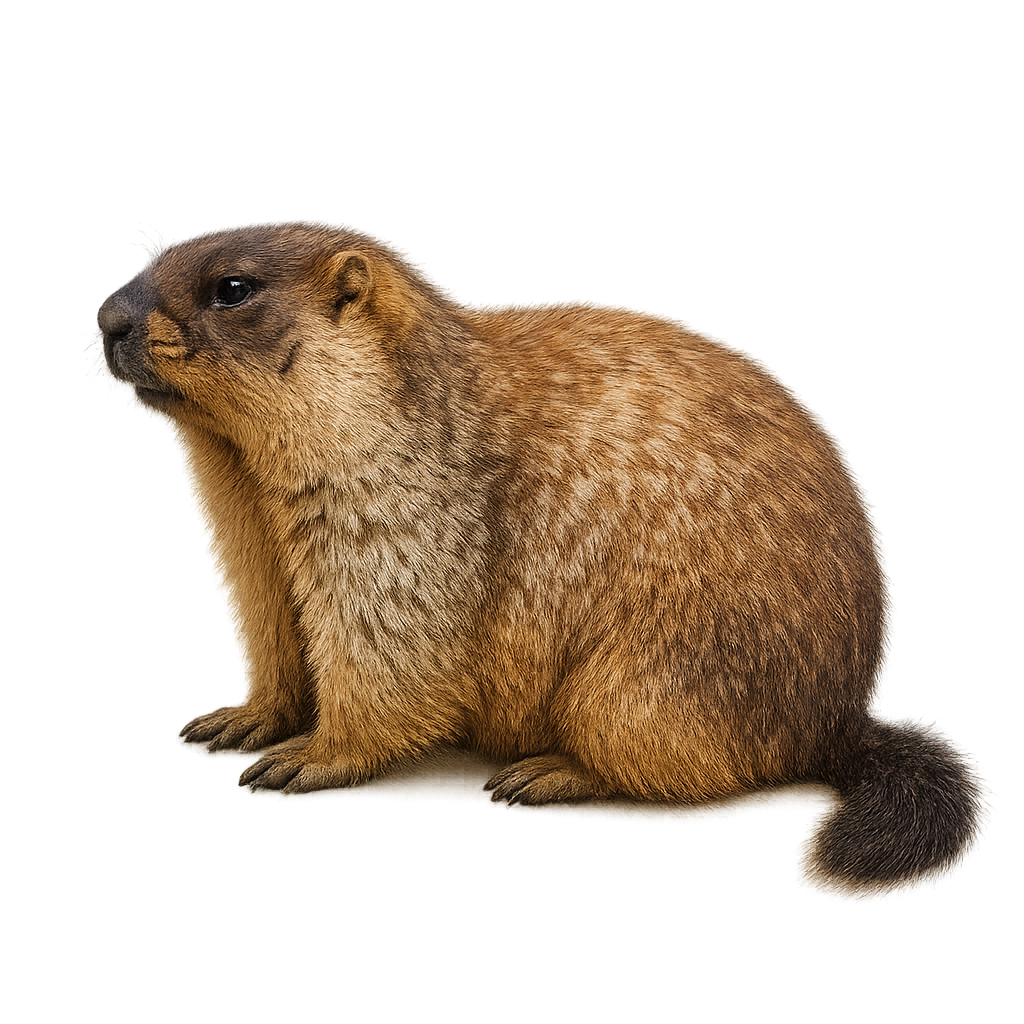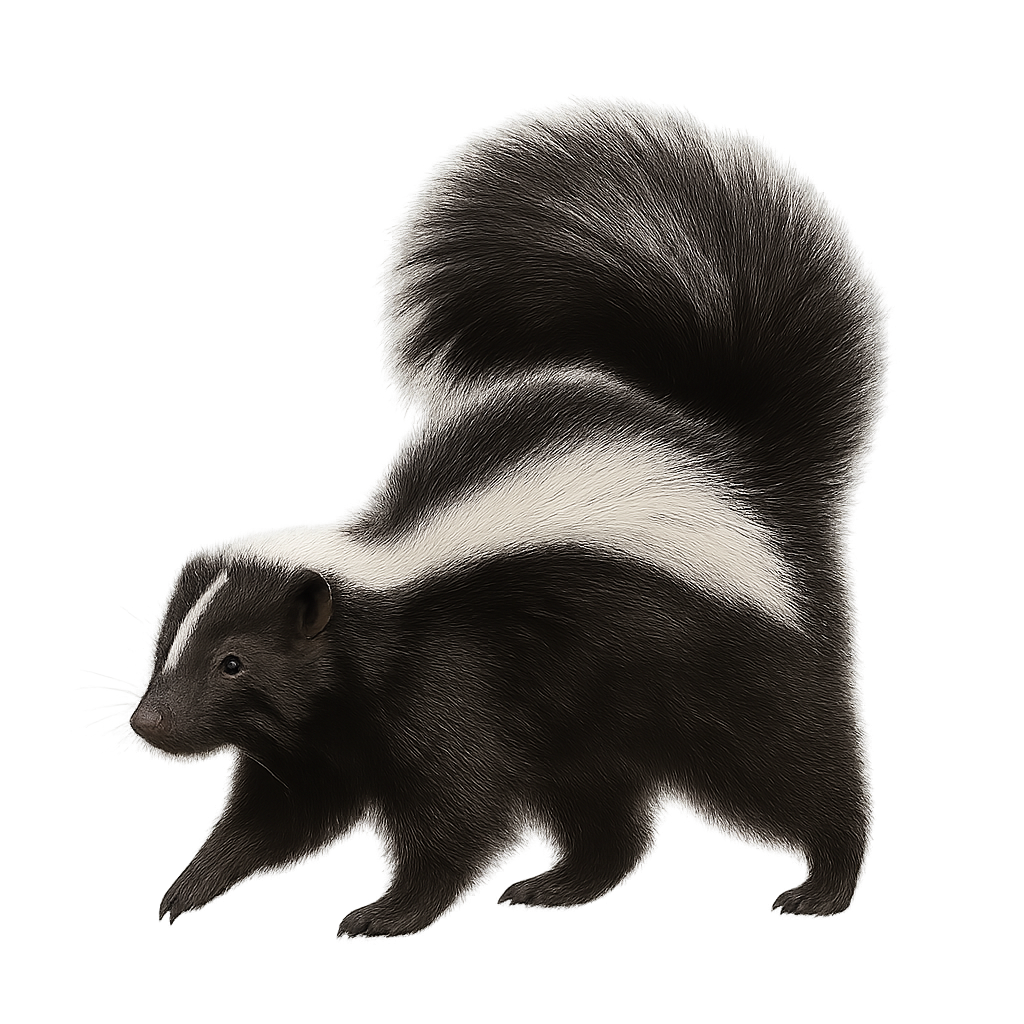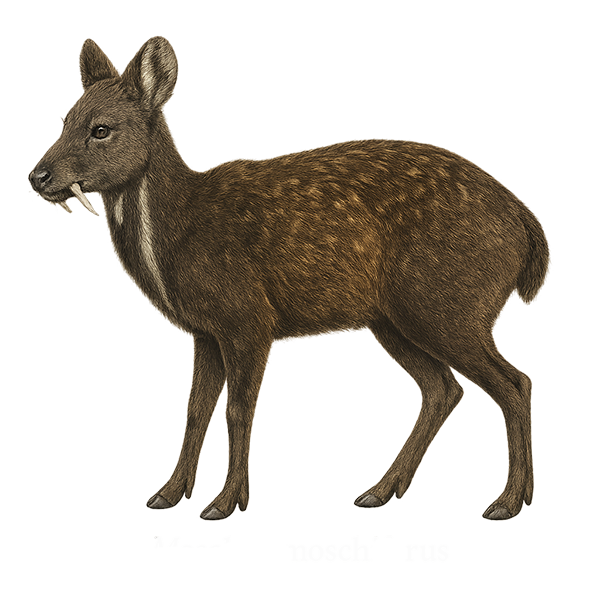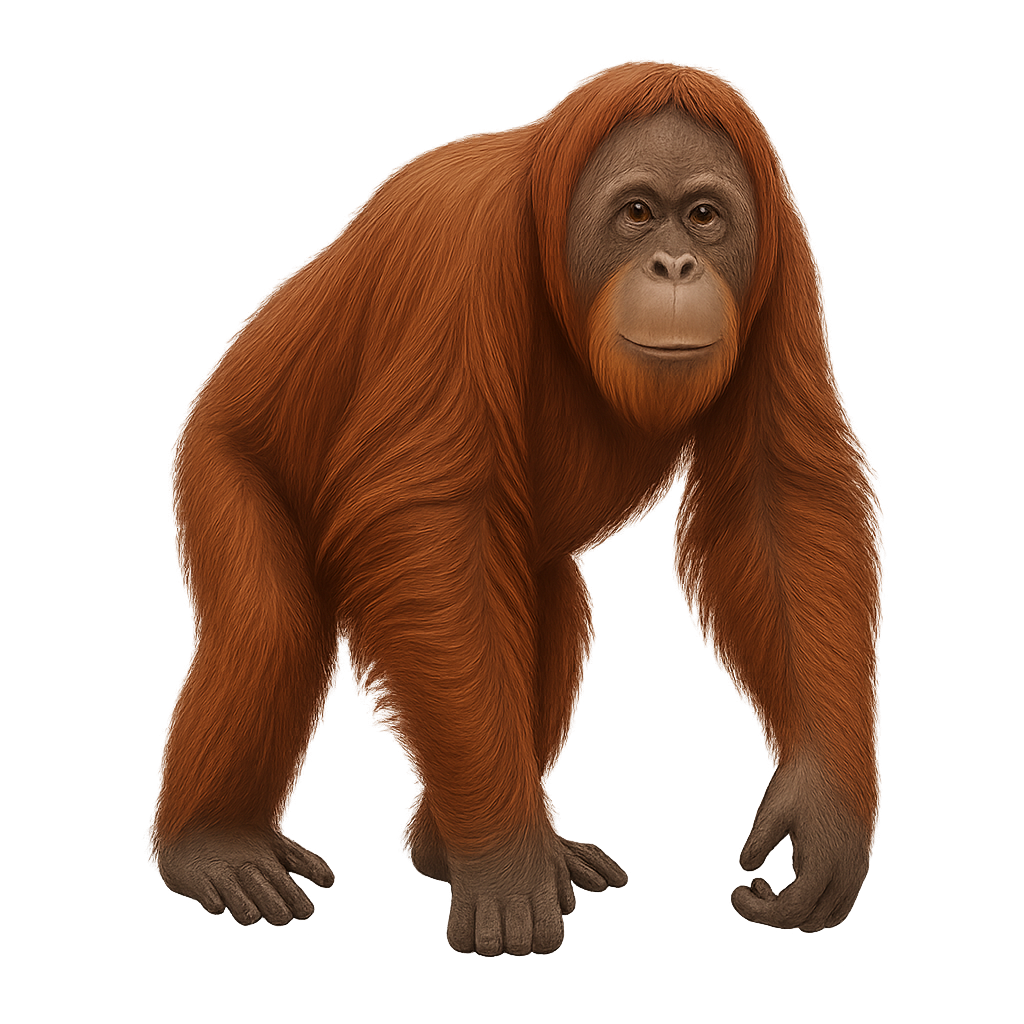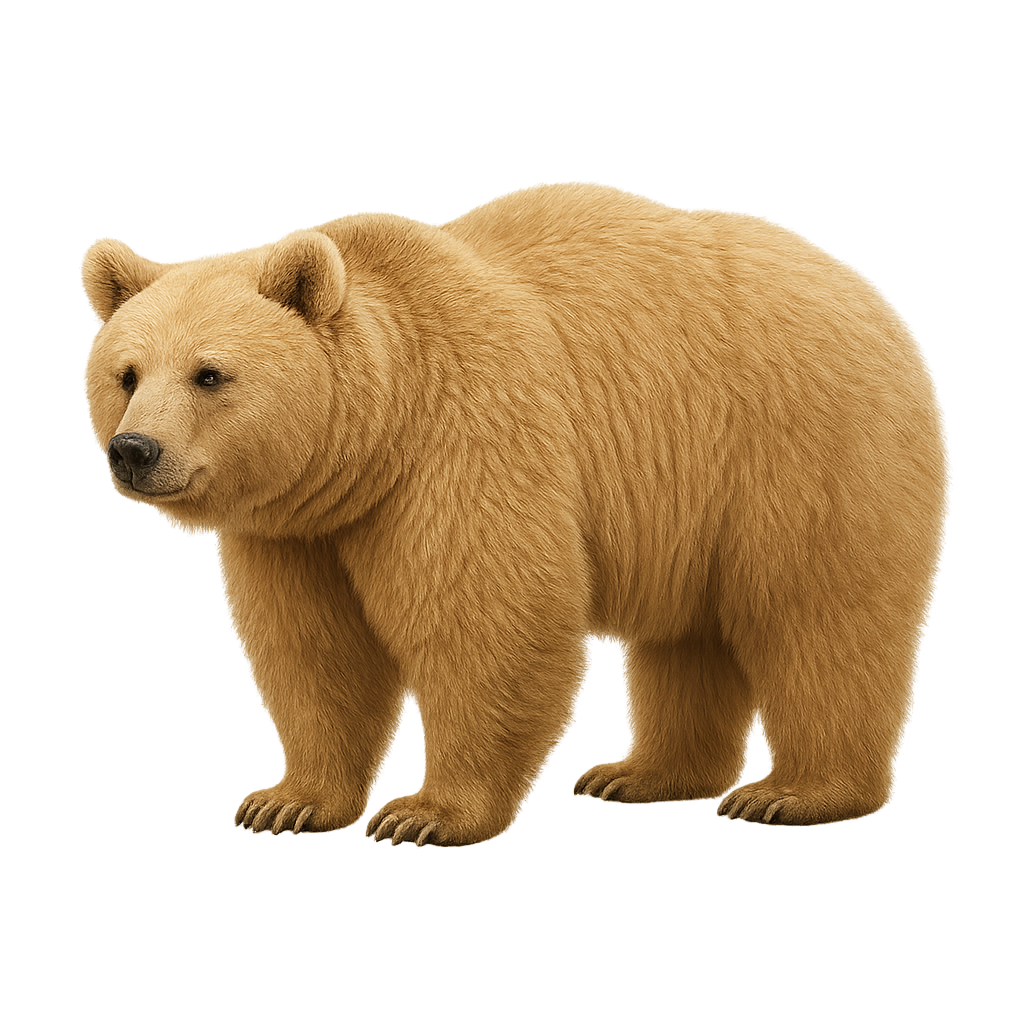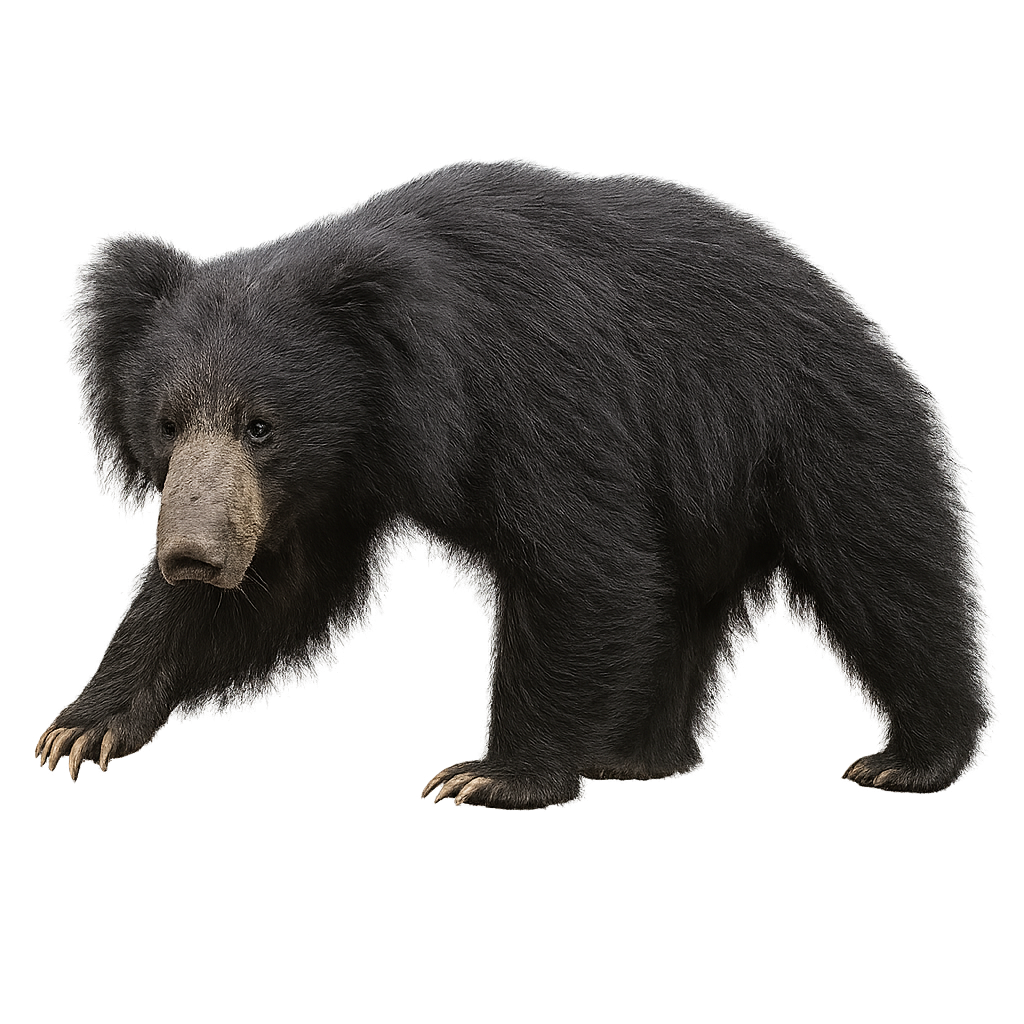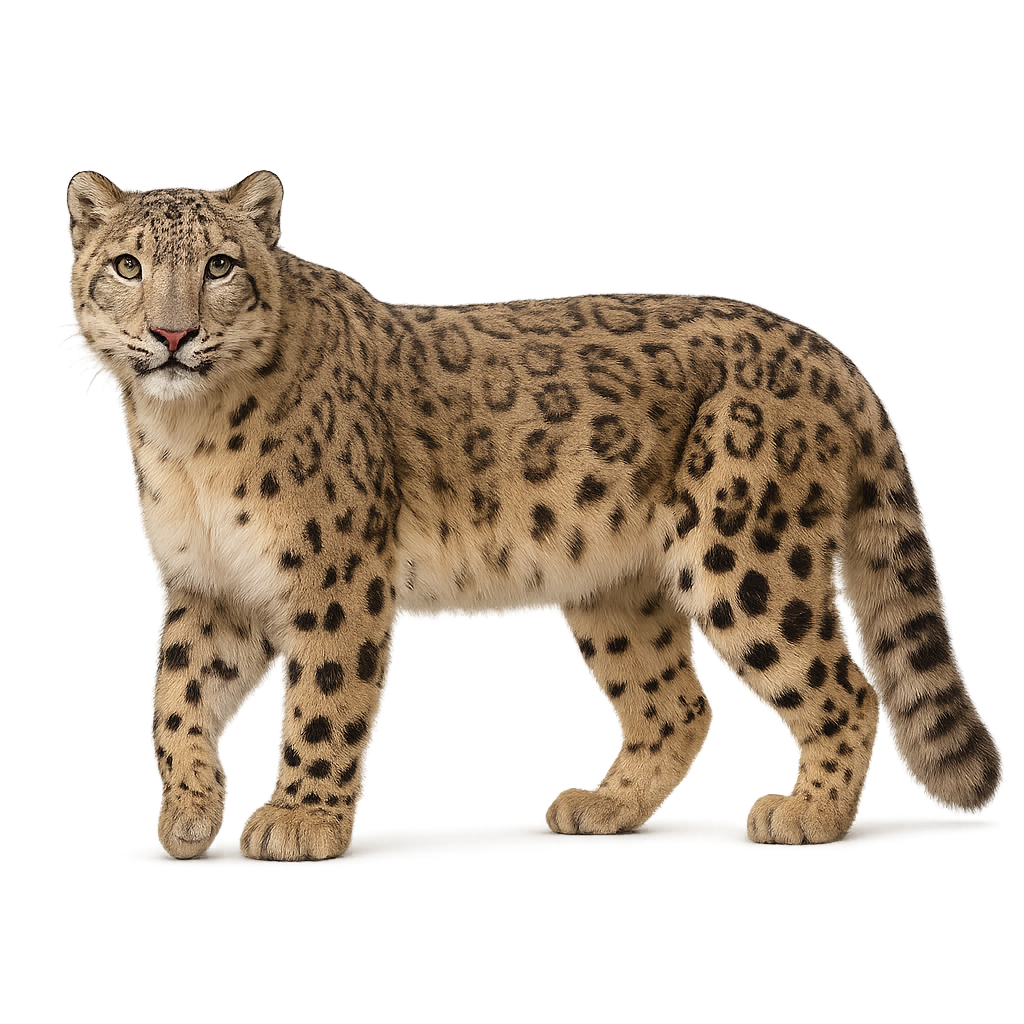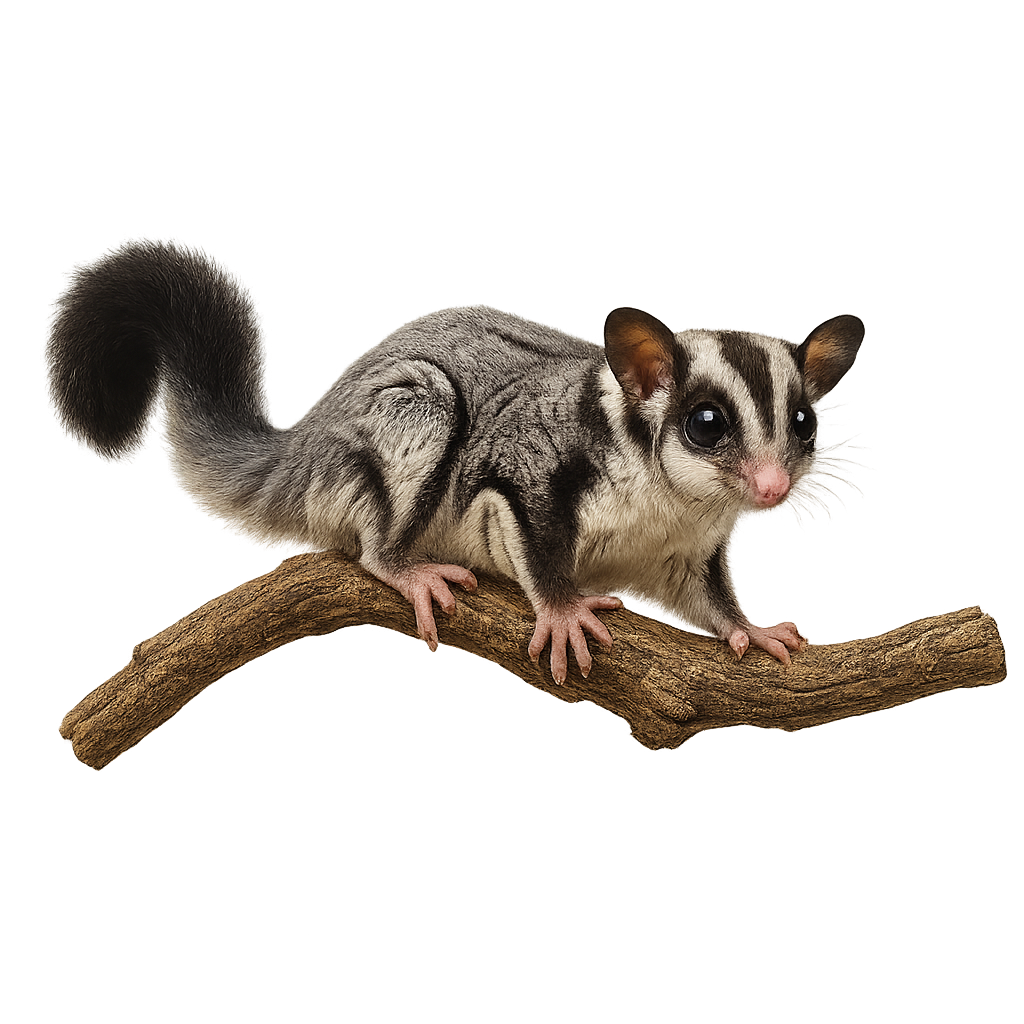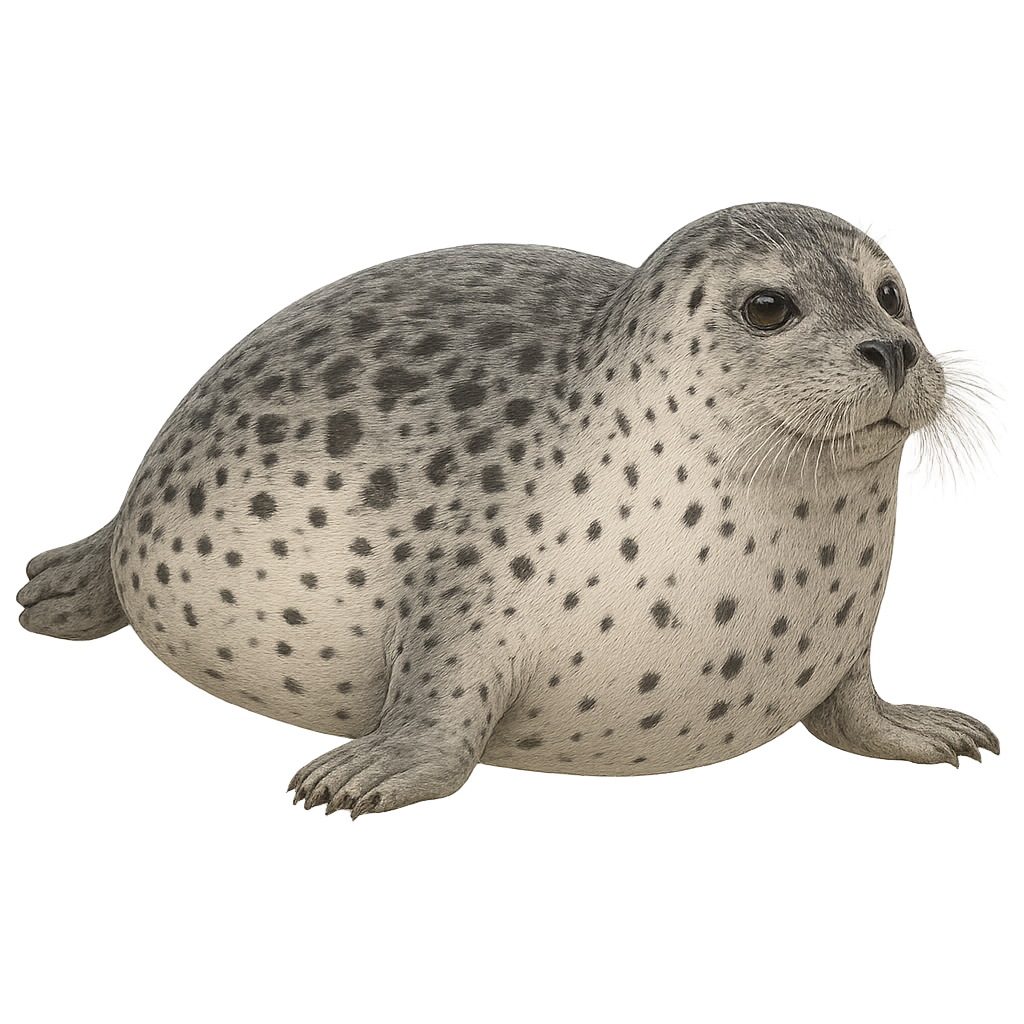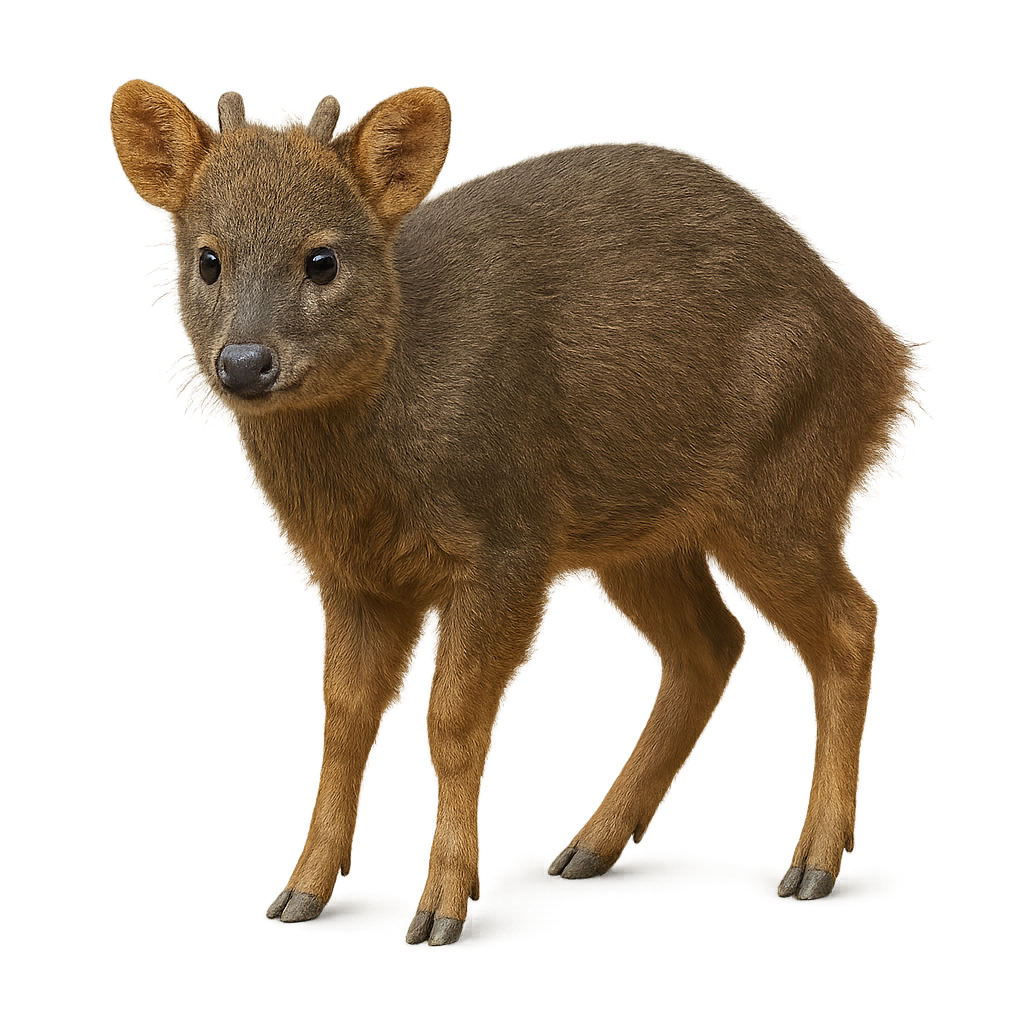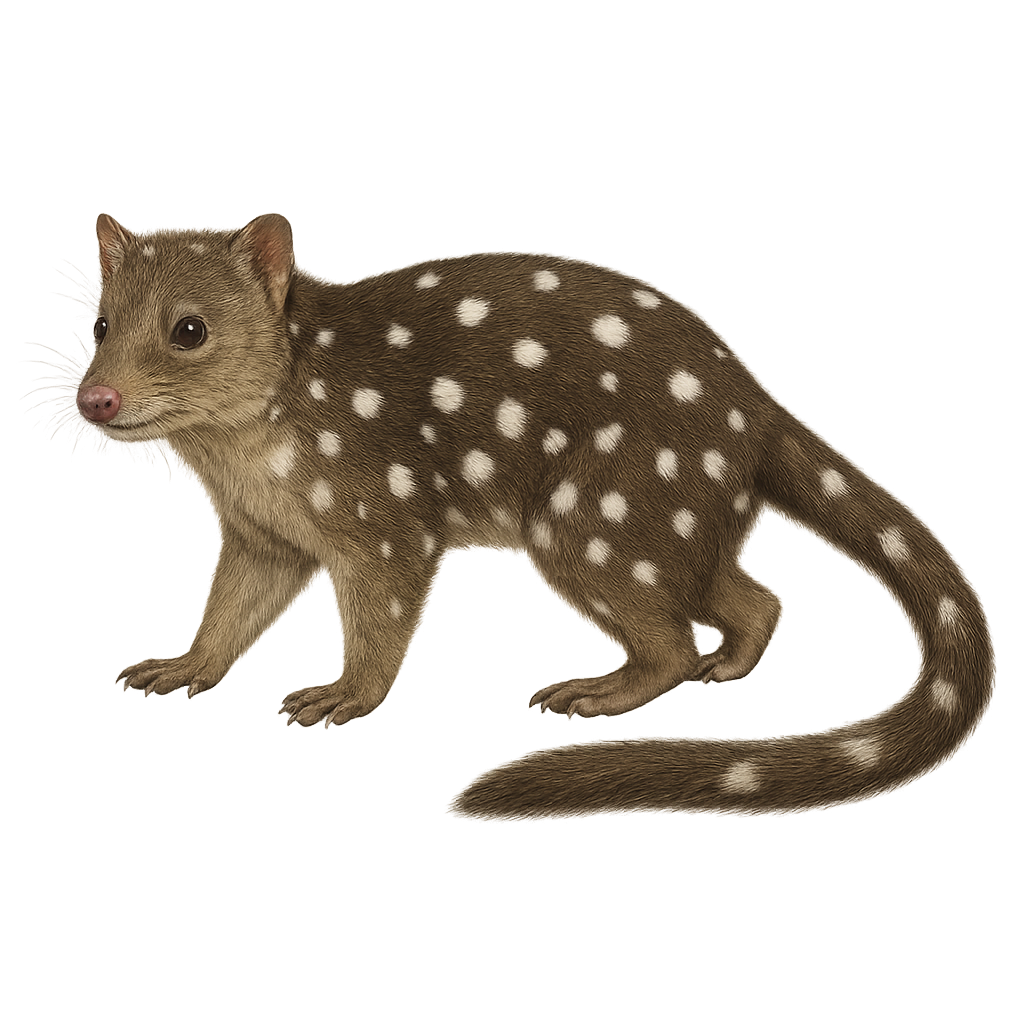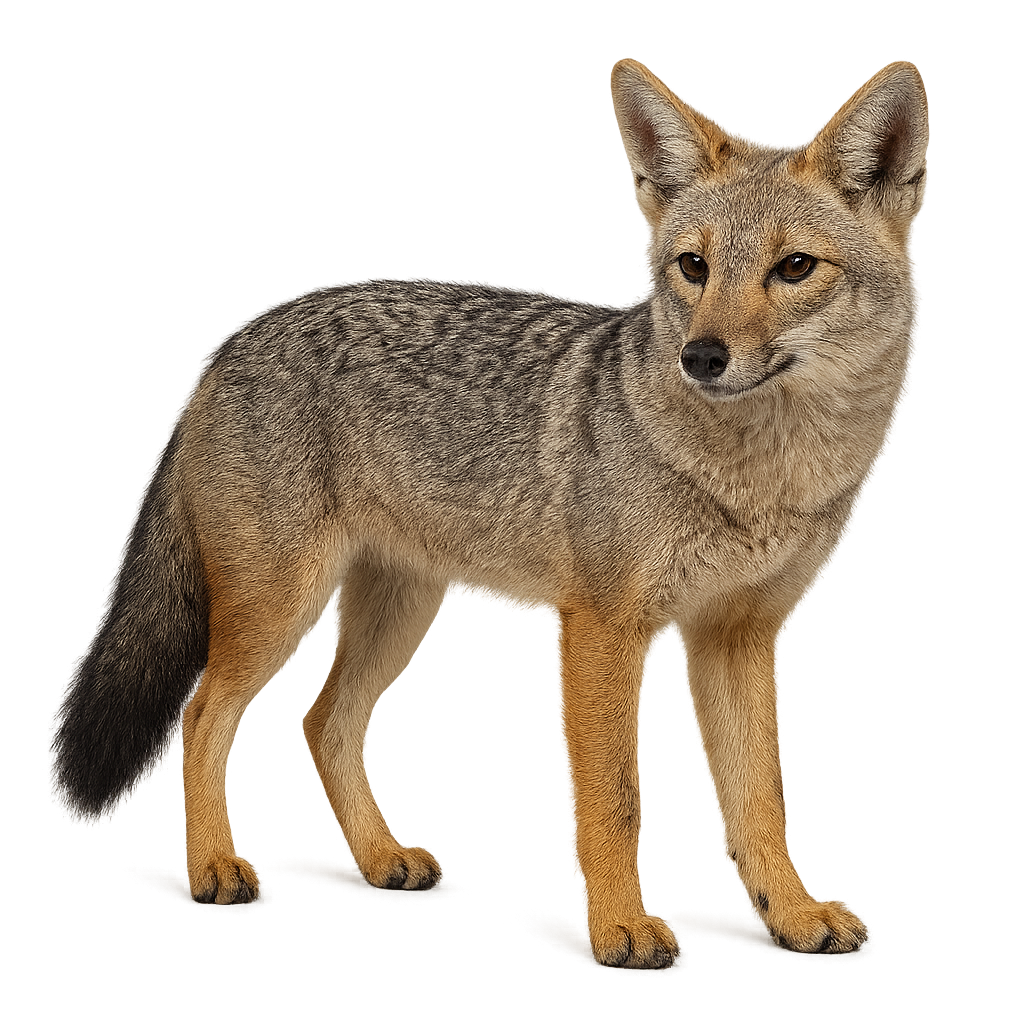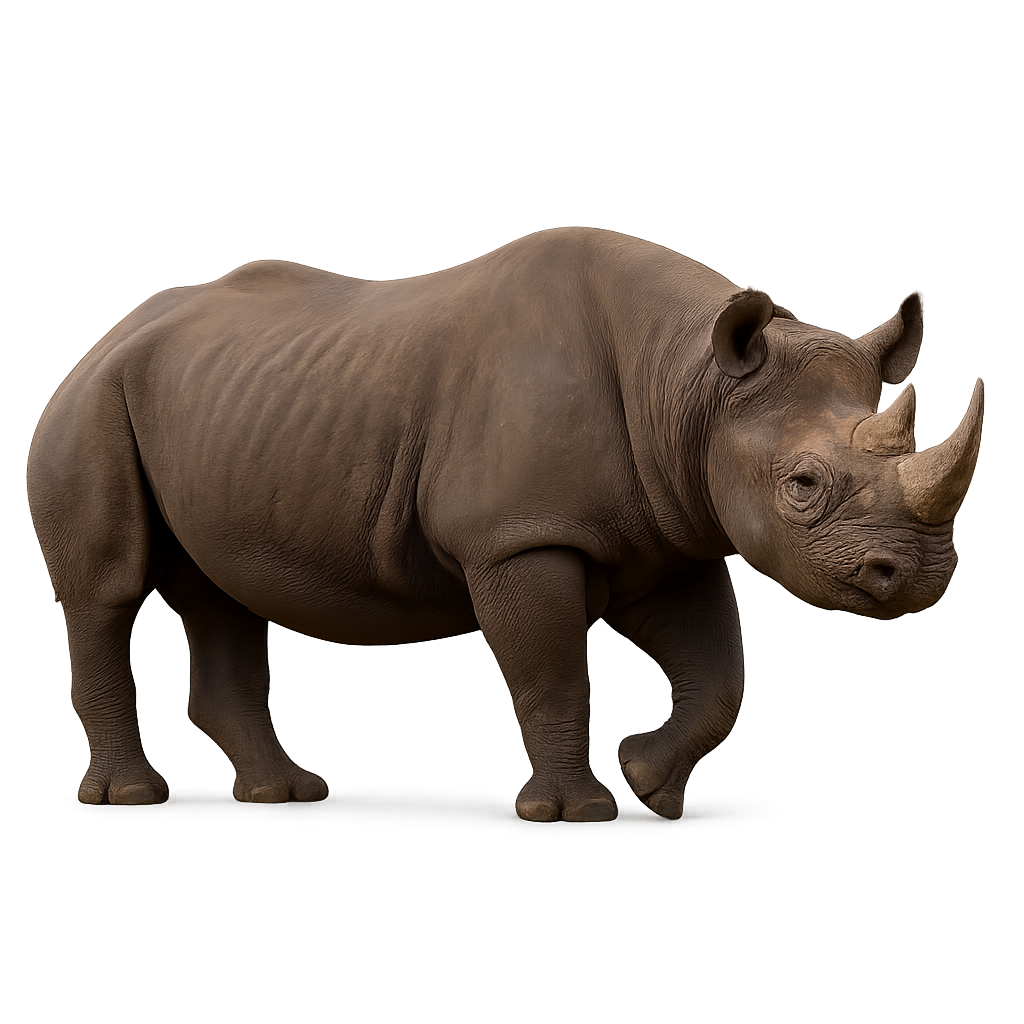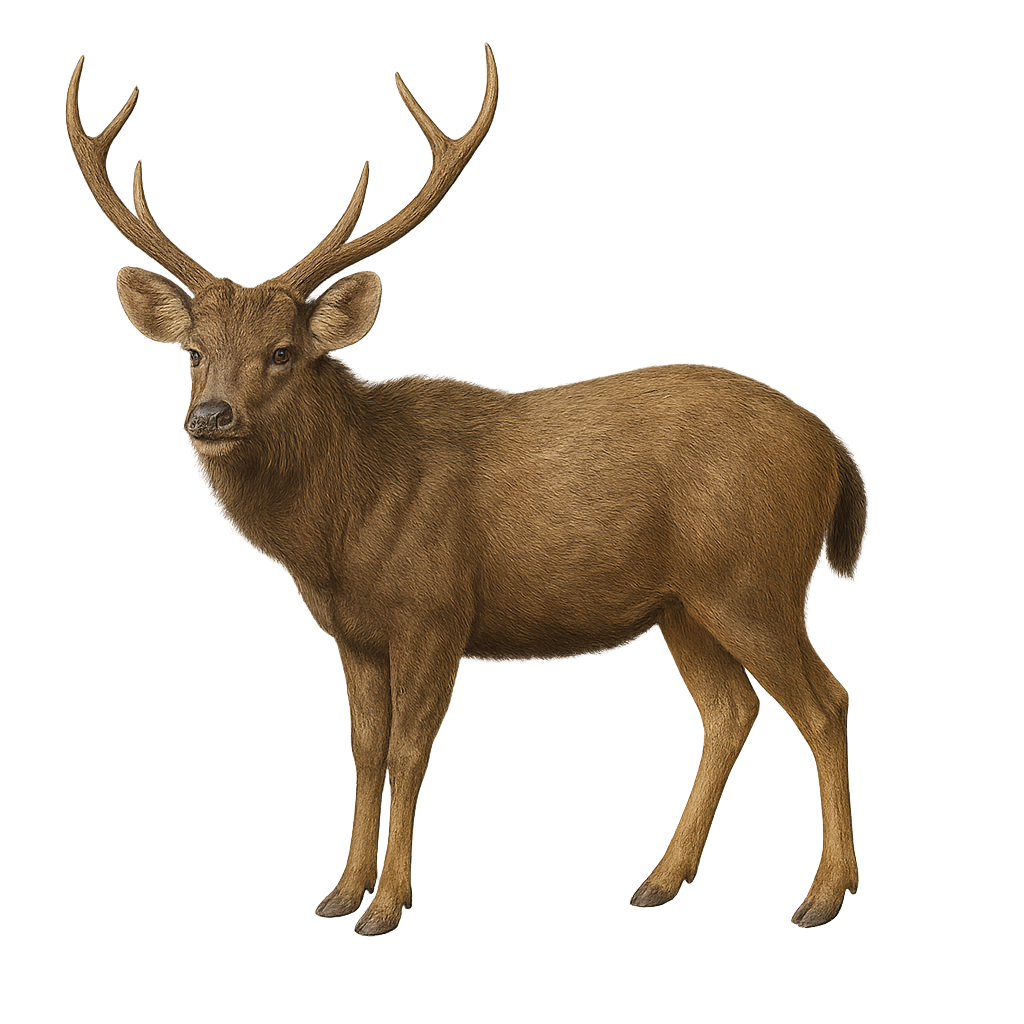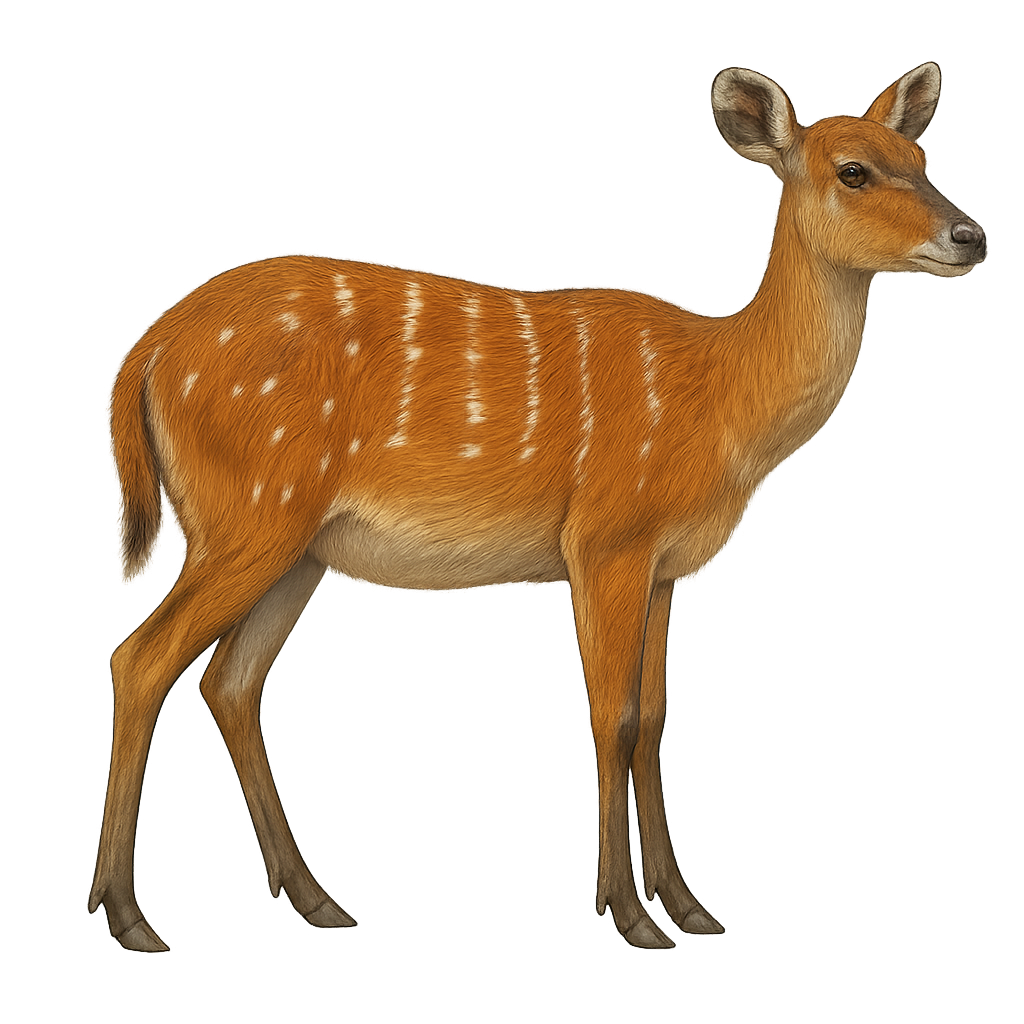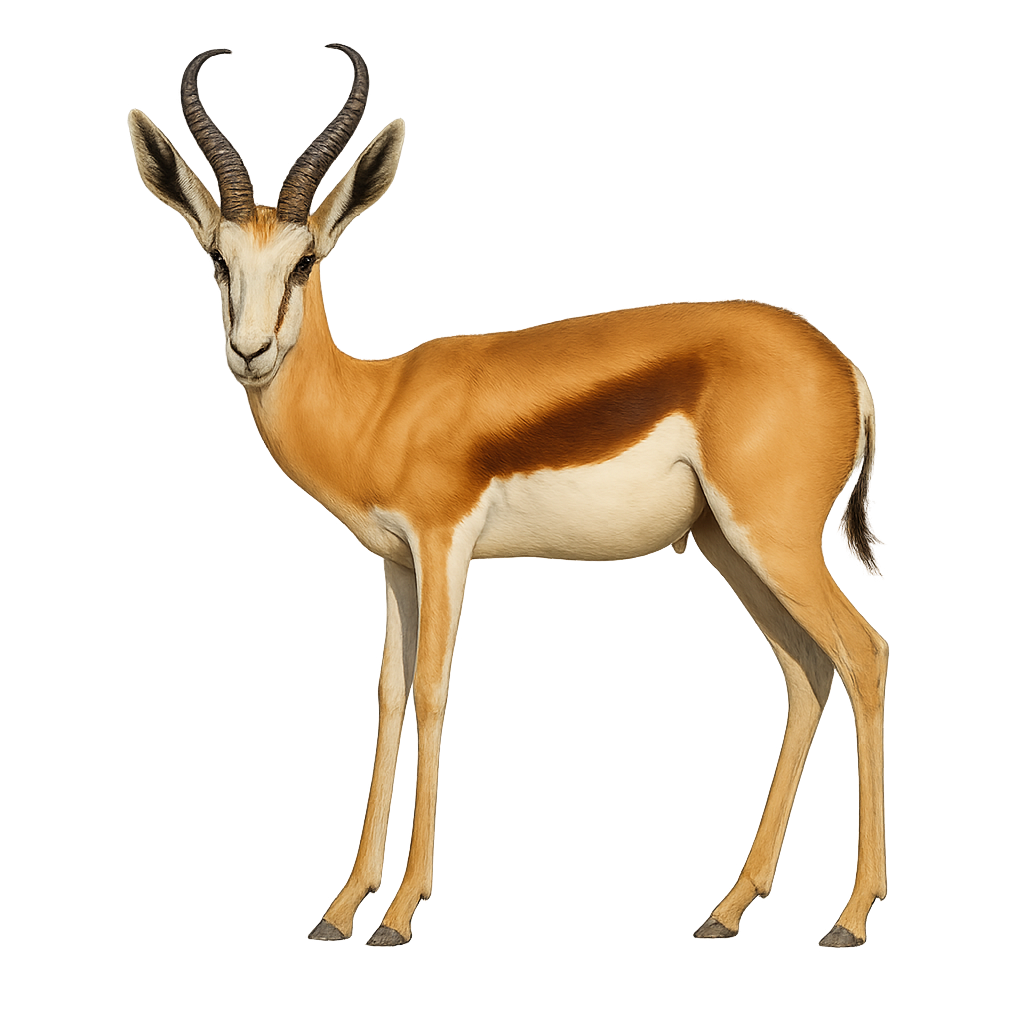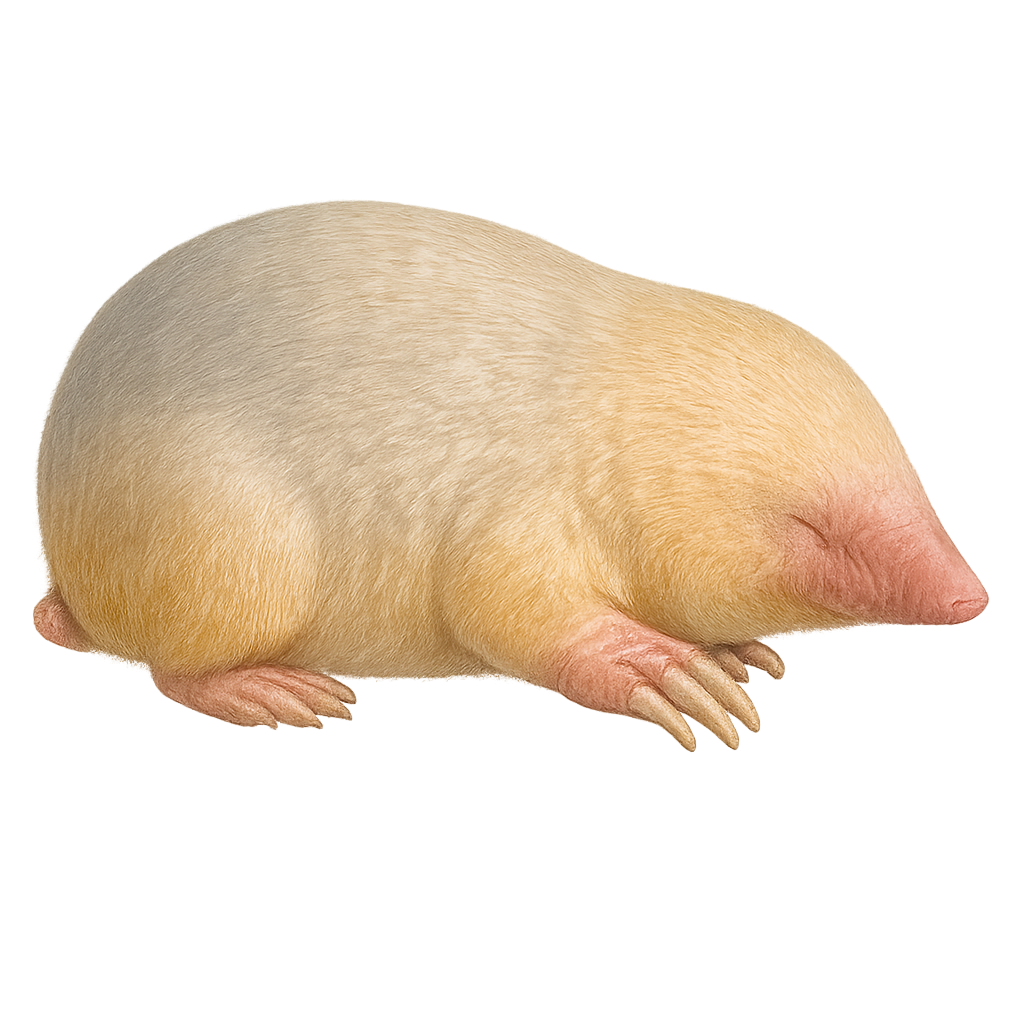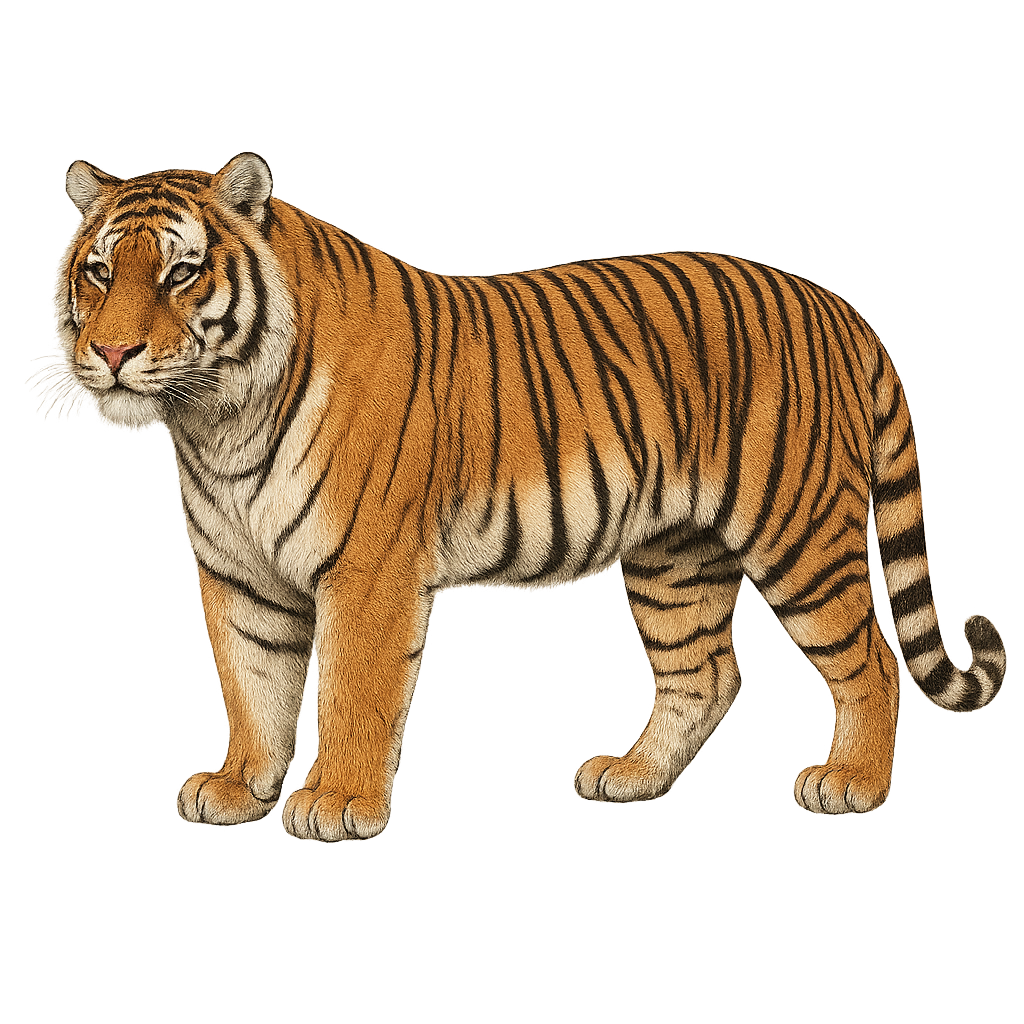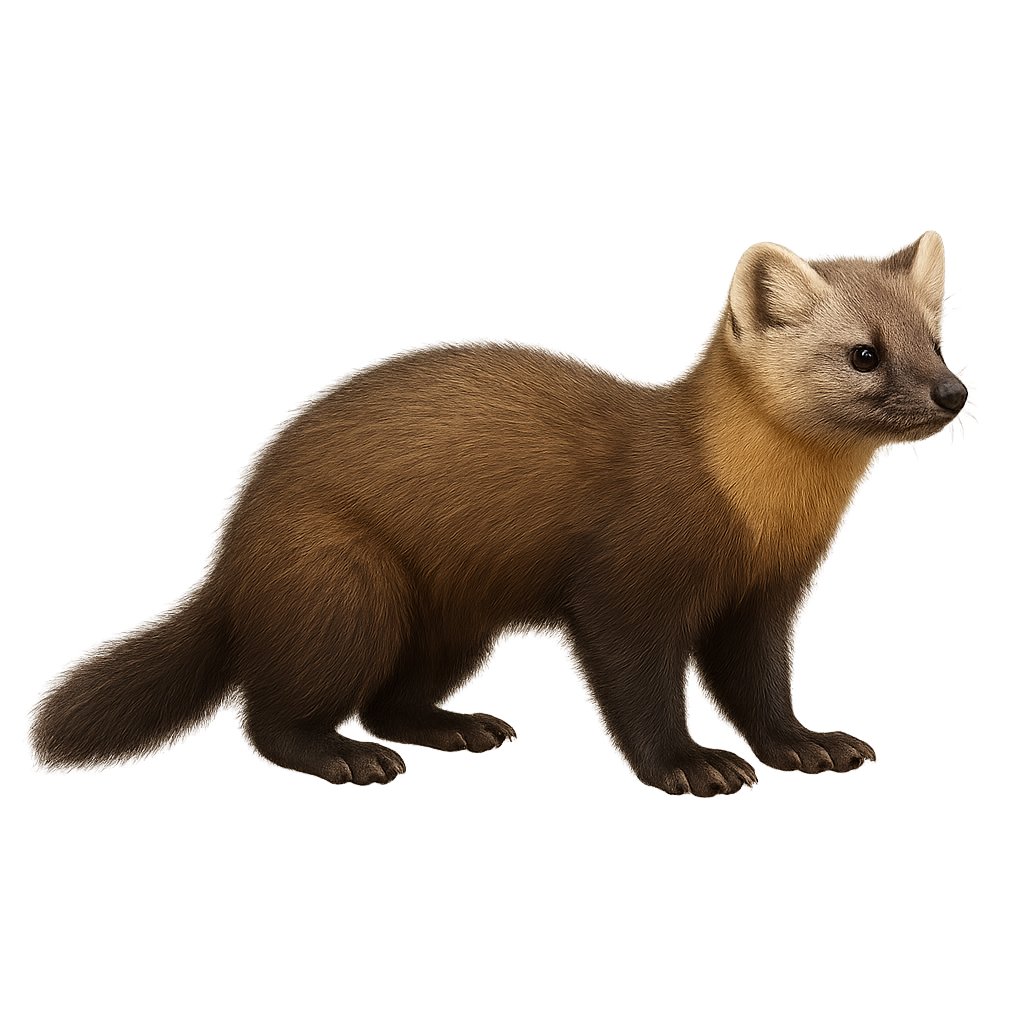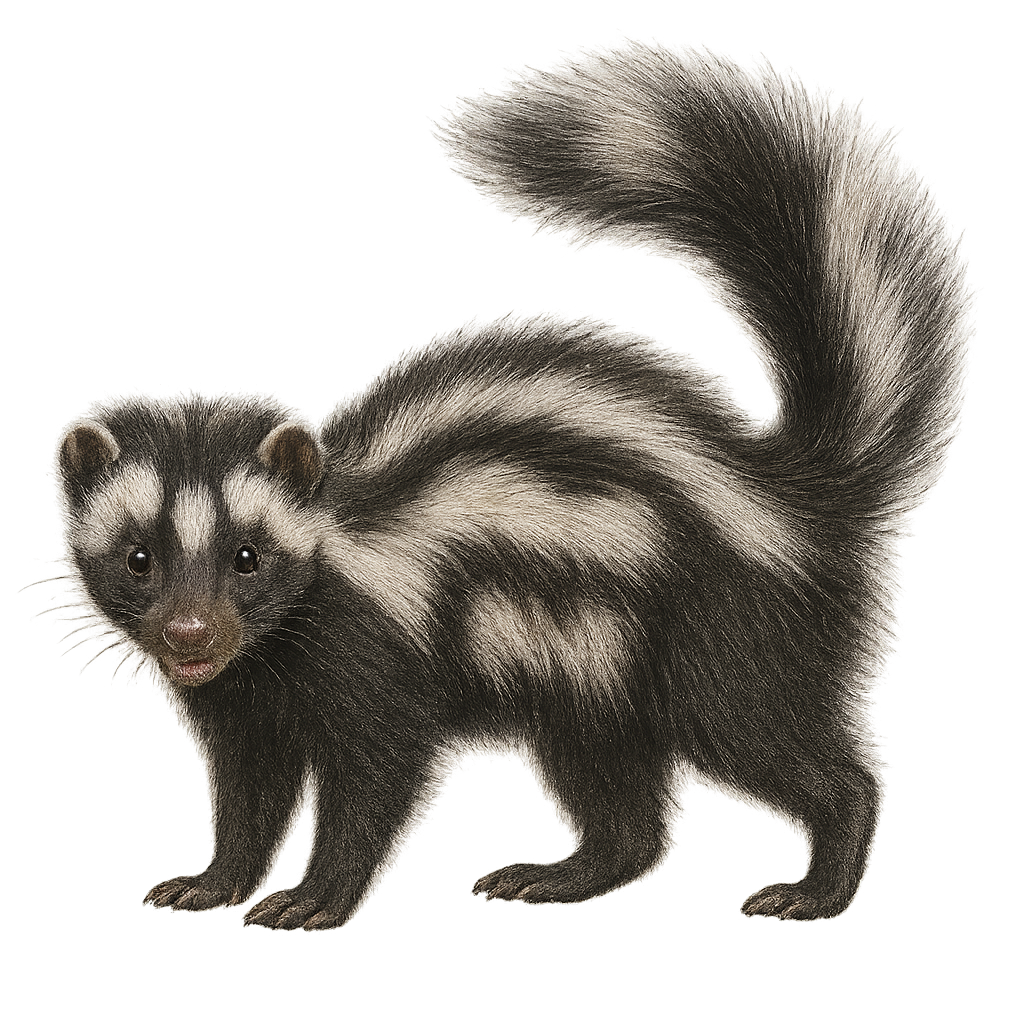The Siberian marmot, Marmota sibirica, is a large rodent belonging to the Sciuridae family. It is primarily found in the steppes and grasslands of Mongolia, Russia, and northern China. This mammal is well adapted to cold climates, spending much of the year in hibernation. Its thick, dense fur ranges from brown to gray, providing excellent insulation against freezing temperatures. Siberian marmots live in colonies and dig extensive burrow systems to protect themselves from predators and harsh weather. They primarily feed on grasses, roots, and seeds. Although their population is stable, they are sometimes hunted for their fur and fat.
The striped skunk, or Mephitis mephitis, is a mammal renowned for its ability to spray a foul-smelling liquid when threatened. It features a black coat with two distinct white stripes running down its back. Primarily nocturnal, it feeds on insects, small mammals, fruits, and plants. It inhabits various environments, from forests to urban areas. Although often seen as a pest, it plays a crucial ecological role in controlling insect and rodent populations. The striped skunk is generally solitary, except during the breeding season.
The snow sheep, or Ovis nivicola, is a robust mammal primarily inhabiting the mountainous regions of the Russian Far East. It is characterized by its thick, woolly coat, which is well-suited to the harsh climatic conditions of its habitat. Males have large, spiraled horns, while females have smaller ones. Their diet mainly consists of grasses, lichens, and mosses. These animals are well adapted to high altitudes, where they find refuge on rocky and steep slopes. Their behavior is generally suspicious, making them difficult to approach. They live in small groups, often consisting of females and young, while adult males may be solitary or form separate groups.
The Siberian Musk Deer, scientifically known as Moschus moschiferus, is a small deer species notable for its lack of antlers and the presence of long canine teeth in males. These animals are primarily nocturnal and inhabit the coniferous forests and mountainous regions of Northern Asia, particularly in Russia, Mongolia, and China. Their thick, brown fur provides excellent camouflage in their natural habitat. Male musk deer produce a fragrant substance, musk, which has been used in perfumery for centuries. Although their population is declining due to hunting for musk and habitat loss, they remain a fascinating and iconic species of the Siberian forests.
The Sumatran orangutan is a majestic primate, measuring between 1.2 and 1.4 meters in height and weighing between 30 and 70 kg. It has a shiny reddish fur, with long arms adapted to its arboreal lifestyle. Native to the island of Sumatra in Indonesia, this orangutan primarily inhabits tropical lowland forests and swampy areas. Its diet mainly consists of fruits, leaves, bark, and small insects. It is primarily solitary and has a great ability to camouflage among the trees. Unfortunately, this species is critically endangered due to massive deforestation, forest fires, and illegal hunting.
The Scimitar oryx, also known as the Sahara oryx, is a medium-sized antelope distinguished by its long, backward-curving horns and white coat with brown markings on the face and neck. Native to the desert and semi-desert regions of North Africa, this species is well adapted to arid environments. It can survive without water for extended periods, obtaining necessary moisture from its food. Unfortunately, the scimitar oryx is classified as extinct in the wild, primarily due to excessive hunting and habitat loss. Reintroduction efforts are underway in some areas to restore viable populations.
The Ursus arctos syriacus, or Syrian brown bear, is a subspecies of the brown bear found mainly in the mountainous regions of the Middle East. Medium-sized, it has a light brown to beige coat, often paler than its European relatives. This bear is omnivorous, feeding on plants, fruits, insects, and occasionally small mammals. Although generally solitary, it can be seen in groups when food is abundant. Its population is declining due to habitat loss and hunting. Protecting this animal is crucial to maintaining the ecological balance of its environment.
The Sloth Bear, also known as the lip bear, is a large carnivorous mammal primarily found in the tropical and subtropical forests of India, Sri Lanka, Bangladesh, and Myanmar. It measures about 1.4 to 1.8 meters in length and weighs between 50 and 150 kg. What particularly distinguishes the Sloth Bear is its face, which has highly mobile lips and long fur around the mouth, giving it its name. Its coat is generally black with white markings on the chest and throat, forming a sort of crescent shape. The Sloth Bear is an omnivore, feeding on fruits, honey, insects, roots, and small animals. Although it is primarily terrestrial, it is also capable of climbing trees. Due to habitat loss and poaching, this species is currently listed as vulnerable.
The Snow Leopard, also known as the ounce, is a large cat primarily found in the mountains of the Himalayas, Tibet, Central Asia, and the Pamir Mountains. It measures between 1.1 and 1.3 meters in length, with a tail of 80 to 100 cm, and weighs between 27 and 55 kg. Its thick, dense fur, which is light gray to white with dark rosettes, allows it to blend perfectly into its snowy environment. The Snow Leopard is a solitary carnivore, primarily feeding on wild goats, sheep, small deer, and sometimes small mammals. It is an excellent climber and stealthy hunter, capable of pouncing on its prey from high ground. Unfortunately, this species is threatened by illegal hunting, poaching, and habitat loss. It is currently listed as "vulnerable" by the IUCN.
The sugar glider, or Petaurus breviceps, is a small arboreal marsupial native to Australia and New Guinea. Known for its ability to glide using a membrane called the patagium, which stretches from its wrists to its ankles, this small animal weighs between 90 and 150 grams. It is primarily nocturnal and feeds on nectar, tree sap, insects, and fruits. Its soft, gray fur with a distinctive black stripe running from its nose to its back makes it easily recognizable. Living in social groups, the sugar glider uses a variety of vocalizations to communicate. Although popular as a pet, it requires specific care to thrive in captivity.
The spotted seal, or Phoca largha, is a medium-sized marine mammal known for its light gray coat adorned with dark spots. It primarily inhabits the cold waters of the North Pacific Ocean, particularly around the coasts of Alaska, Russia, and Japan. This seal is well adapted to aquatic life, with a streamlined body and powerful flippers that allow it to swim gracefully. It feeds mainly on fish, crustaceans, and cephalopods. Spotted seals are often solitary but may gather in small groups during the breeding season or at haul-out sites. Their population is currently stable, although threats such as pollution and climate change may impact their habitat.
The Striped hyena is a terrestrial carnivore native to North Africa and the Middle East. It is distinguished by the characteristic stripes on its back and its somewhat awkward gait. This nocturnal predator primarily feeds on carrion, small mammals, and insects. Unlike other hyenas, the Striped hyena is more solitary and less aggressive. Although relatively discreet, it is threatened by habitat destruction and human persecution.
The southern pudu is the world's smallest deer, measuring 35–45 cm at the shoulder and weighing 7–10 kg, with dense reddish-brown fur. A secretive and crepuscular species of temperate South American forests, it feeds mainly on leaves, fungi and fallen fruits. During the rutting period, males mark a small territory by rubbing against shrubs and emitting soft calls.
The spotted-tailed quoll, or Dasyurus maculatus, is a carnivorous marsupial native to Australia. It is characterized by its brown fur with white spots, a long tail, and a slender build. This agile predator is primarily nocturnal, feeding on small mammals, birds, and insects. It inhabits various environments, from rainforests to temperate woodlands. Although a solitary hunter, it can sometimes be seen in small groups during the breeding season. The spotted-tailed quoll plays a crucial role in the ecosystem by regulating prey populations. However, its population is declining due to habitat loss and predation by introduced species.
The South American Gray Fox, or Lycalopex grisea, is a medium-sized canid native to South America. It is characterized by its silvery-gray fur, pointed ears, and bushy tail. This fox is well adapted to various environments, from arid plains to temperate forests. It is omnivorous, feeding on small mammals, birds, insects, and fruits. Although often solitary, it can be seen in small family groups. Its ability to adapt to different habitats and diets makes it a resilient species. However, it is sometimes threatened by hunting and habitat loss.
The Southern White Rhinoceros is a large herbivorous mammal primarily found in the savannas and grasslands of Southern Africa, notably in South Africa, Botswana, Zimbabwe, and Namibia. It is one of the largest species of rhinoceros, measuring up to 4 meters in length and weighing between 1,500 and 2,400 kg. It is distinguished by its large square-shaped mouth, adapted for grazing, and its light gray to grayish skin. The Southern White Rhinoceros is a strict herbivore, primarily feeding on grass, though it may occasionally consume leaves and fruits. While its population has long been threatened by poaching and habitat loss, thanks to conservation efforts, its population has made a remarkable recovery and remains relatively stable.
The Sumatran Rhinoceros is a critically endangered species of rhinoceros found primarily on the island of Sumatra in Indonesia. It measures about 2 to 3 meters in length, with a tail of 60 to 70 cm, and weighs between 500 and 800 kg. Its fur is generally light brown or reddish, with thick, wrinkled skin. This rhinoceros is one of the smallest members of the rhinoceros family and has two horns. The Sumatran Rhinoceros is herbivorous, feeding on leaves, fruits, roots, and shoots. It primarily lives in tropical lowland forests and swampy areas. While conservation efforts have been made to protect this species, it remains threatened by deforestation, poaching, and habitat loss, with a population estimated to be fewer than 80 individuals in the wild.
The saiga is an antelope from the Central Asian steppes, recognizable by its prominent, trunk-like nose that filters dust and warms inhaled air. Adapted to arid environments, it migrates in large herds in search of pastures. Its population, once declining, shows signs of recovery due to conservation efforts.
The sambar, or Cervus unicolor, is a large deer native to South and Southeast Asia. It is recognizable by its dark brown coat and impressive antlers in males. Sambars primarily inhabit dense forests, grasslands, and swamps, feeding on leaves, fruits, and bark. They are generally solitary or live in small family groups. The sambar is a crepuscular animal, active mainly at dawn and dusk. Although hunted for its meat and antlers, it remains relatively widespread in its natural habitat. However, deforestation and overhunting threaten some local populations.
Saola
Pseudoryx nghetinhensis
The Saola, also known as the 'Asian unicorn,' is one of the rarest and most mysterious mammals on the planet, first discovered in 1992 in the mountains of Vietnam and Laos. This critically endangered cervid has spiral horns and a stealthy gait. It lives in tropical mountain forests and primarily feeds on vegetation. Due to its elusive nature and inaccessible habitat, it is very difficult to observe. It is threatened by deforestation and poaching.
The Serval is a medium-sized feline primarily found in the savannas and grasslands of sub-Saharan Africa, notably in East and Central Africa. It typically measures between 60 and 100 cm in length, with a tail of 30 to 40 cm, and weighs between 9 and 18 kg. Its coat is golden yellow, speckled with irregular black spots, which helps it camouflage effectively in its natural environment. The Serval has long legs, a small head, and large ears, which allow it to easily detect its prey, including small mammals, birds, and reptiles. It is also capable of impressive leaps to catch its prey, particularly birds in flight. While its population remains stable in some areas, the Serval is threatened by habitat loss and illegal hunting.
The sitatunga, or Tragelaphus spekii, is a semi-aquatic antelope found mainly in the marshes and wetlands of Central and East Africa. It is easily recognizable by its reddish-brown coat, vertical white stripes, and long spiraled horns in males. Sitatungas are well adapted to their aquatic habitat, with long, splayed hooves that allow them to move easily through swamps. They are primarily active at dawn and dusk, feeding on aquatic plants, grasses, and leaves. Sitatungas are shy and elusive animals, preferring to remain hidden in dense vegetation to avoid predators.
The Springbok is a small antelope found primarily in the savannas and grasslands of South Africa, Namibia, and Botswana. It typically stands about 75 cm at the shoulder, with a body length of 1.10 to 1.30 meters, and weighs between 30 and 40 kg. Its coat is primarily white and brown, with a dark line running along its back and a large white patch on its sides. What sets the Springbok apart is its ability to perform characteristic jumps, known as "pronking," where the animal leaps into the air with its legs extended, often to signal danger or to impress another individual. The Springbok is herbivorous, feeding primarily on grass and leaves. While it remains relatively abundant in its habitat, it is sometimes threatened by hunting and habitat loss.
The Céphalophe de Grimm is a small antelope found primarily in dry regions and open savannas of sub-Saharan Africa, particularly in countries such as South Africa, Botswana, and Namibia. It typically stands about 45 to 60 cm at the shoulder, with a body length of 80 to 100 cm, and weighs between 8 and 15 kg. Its coat is generally fawn to light brown, with white markings on its legs and around its eyes. The Céphalophe de Grimm has small horns in males, but they are generally more discreet than those of other antelope species. This small herbivore feeds primarily on grasses, fruits, and leaves. It is known for its ability to hide in dense vegetation and escape quickly from predators. While its population remains relatively stable, the Céphalophe de Grimm is sometimes threatened by habitat loss and hunting.
The Southern Tamandua is an arboreal anteater found primarily in South America. It is recognizable by its beige and black fur, which allows it to blend into the trees. It has a long sticky tongue, ideal for capturing ants and termites, which make up the bulk of its diet. This mammal is mainly nocturnal and spends the day resting in trees. Although generally solitary, it can sometimes be seen in pairs. Its prehensile tail allows it to move easily through the trees, and it uses its powerful claws to defend itself against predators.
The Southern Marsupial Mole, Notoryctes typhlops, is a small marsupial mammal endemic to Australia. Adapted to a subterranean lifestyle, it has a cylindrical body, powerful forelimbs, and robust claws for digging. Its skin is covered with silky fur, usually cream or golden in color. It is blind, with eyes covered by skin, and lacks visible external ears. It primarily feeds on insects and larvae found underground. The marsupial mole is rarely observed due to its underground lifestyle and restricted habitat in the deserts and arid regions of central and western Australia.
The Siberian tiger, or Panthera tigris altaica, is the largest living feline. It is distinguished by its thick, light-colored fur, adapted to the harsh winters of its natural habitat. Its black stripes on a pale orange background allow it to camouflage in coniferous forests and snowy steppes. This solitary predator is a nocturnal hunter, primarily feeding on large ungulates like deer and wild boar. Although its territory spans vast areas, it is threatened by deforestation and poaching. Conservation efforts are crucial for its survival, as it is classified as endangered by the IUCN.
The sable, Martes zibellina, is a small carnivorous mammal belonging to the Mustelidae family. It is primarily found in the coniferous forests of the Siberian taiga and other parts of northern Asia. Known for its dense and silky fur, it is highly valued in the fashion industry. The sable has a slender body, short legs, and a bushy tail. It is an agile predator, feeding mainly on small rodents, birds, and occasionally fruits. It is solitary and territorial, marking its territory with scent secretions. The sable is mostly active at dusk and night. Its population is stable, but it is threatened by overhunting and deforestation.
The striped polecat, scientifically known as Ictonyx striatus, is a small carnivorous mammal belonging to the Mustelidae family. It is easily recognizable by its distinctive black and white fur, with white stripes running along its back. This nocturnal predator is primarily active at night, using its keen sense of smell to hunt small rodents, birds, and insects. The striped polecat is equipped with powerful anal glands that emit a foul odor to deter predators. It primarily inhabits savannas, grasslands, and wooded areas of sub-Saharan Africa. Although its appearance may resemble that of a skunk, it is not directly related to it.


